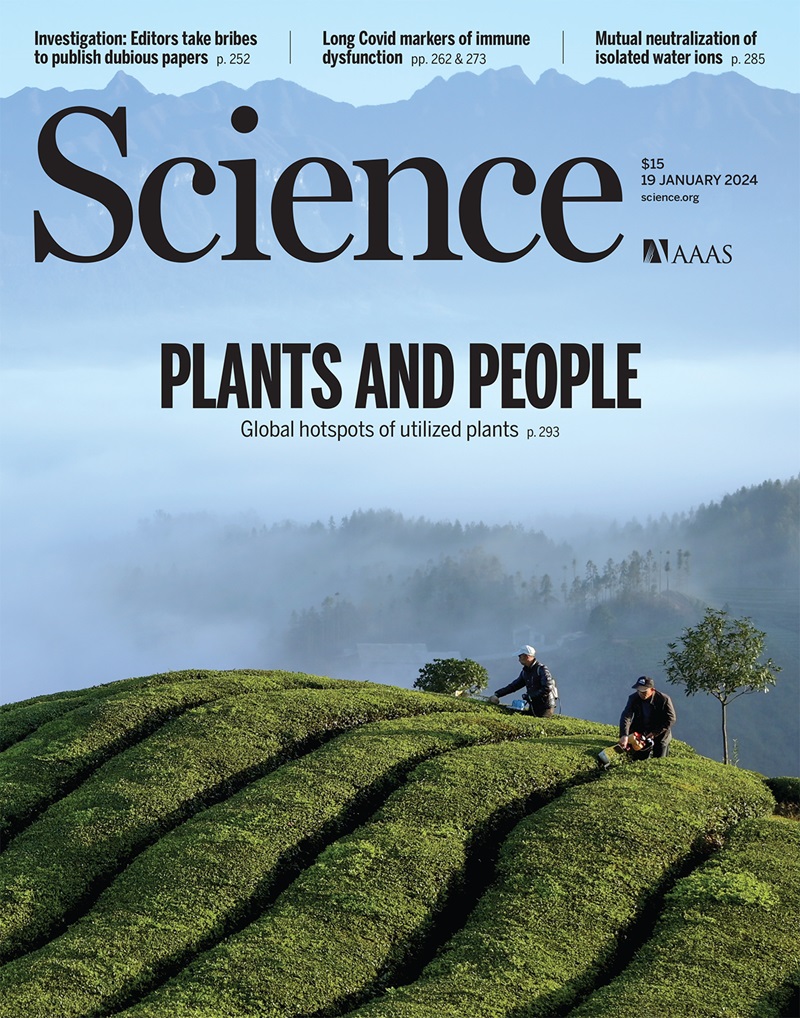重写细胞分裂的规则
IF 44.7
1区 综合性期刊
Q1 MULTIDISCIPLINARY SCIENCES
引用次数: 0
摘要
长期以来,动物细胞分裂被认为是一种严格的劳动分工。运送、组织和分离染色体是构成有丝分裂纺锤体的微管和微管相关蛋白的工作,而分裂细胞本身是细胞皮层中的肌动蛋白丝(F-actin)和肌球蛋白-2(一种基于F-actin的驱动收缩的运动蛋白)的工作,细胞皮层是位于细胞质膜下面的细胞外围的细胞质层。这种观点已经持续了50多年,任何例外都被视为特殊情况。然而,在本期的第835页,Hernandez等人(1)报道了F-actin在早期小鼠胚胎有丝分裂期间染色体运输、组织和纺锤体组装中发挥作用。这些发现表明,成功的有丝分裂可能比通常认为的更多的机制。本文章由计算机程序翻译,如有差异,请以英文原文为准。
Rewriting the rules of cell division
Animal cell division has long been thought to represent a strict division of labor. Transporting, organizing, and then separating the chromosomes is the job of microtubules and microtubule-associated proteins that constitute the mitotic spindle, whereas splitting the cell itself is the job of actin filaments (F-actin) and myosin-2 (an F-actin–based motor protein that drives contraction) in the cell cortex, the layer of cytoplasm at the cell periphery just beneath the plasma membrane. This view has persisted for more than five decades, with any exceptions considered as special cases. However, on page 835 of this issue, Hernandez et al. (1) report that F-actin has a role in chromosome transport, organization, and spindle assembly during mitosis in early mouse embryos. These findings demonstrate that successful mitosis may draw on more mechanisms than commonly assumed.
求助全文
通过发布文献求助,成功后即可免费获取论文全文。
去求助
来源期刊

Science
综合性期刊-综合性期刊
CiteScore
61.10
自引率
0.90%
发文量
0
审稿时长
2.1 months
期刊介绍:
Science is a leading outlet for scientific news, commentary, and cutting-edge research. Through its print and online incarnations, Science reaches an estimated worldwide readership of more than one million. Science’s authorship is global too, and its articles consistently rank among the world's most cited research.
Science serves as a forum for discussion of important issues related to the advancement of science by publishing material on which a consensus has been reached as well as including the presentation of minority or conflicting points of view. Accordingly, all articles published in Science—including editorials, news and comment, and book reviews—are signed and reflect the individual views of the authors and not official points of view adopted by AAAS or the institutions with which the authors are affiliated.
Science seeks to publish those papers that are most influential in their fields or across fields and that will significantly advance scientific understanding. Selected papers should present novel and broadly important data, syntheses, or concepts. They should merit recognition by the wider scientific community and general public provided by publication in Science, beyond that provided by specialty journals. Science welcomes submissions from all fields of science and from any source. The editors are committed to the prompt evaluation and publication of submitted papers while upholding high standards that support reproducibility of published research. Science is published weekly; selected papers are published online ahead of print.
 求助内容:
求助内容: 应助结果提醒方式:
应助结果提醒方式:


